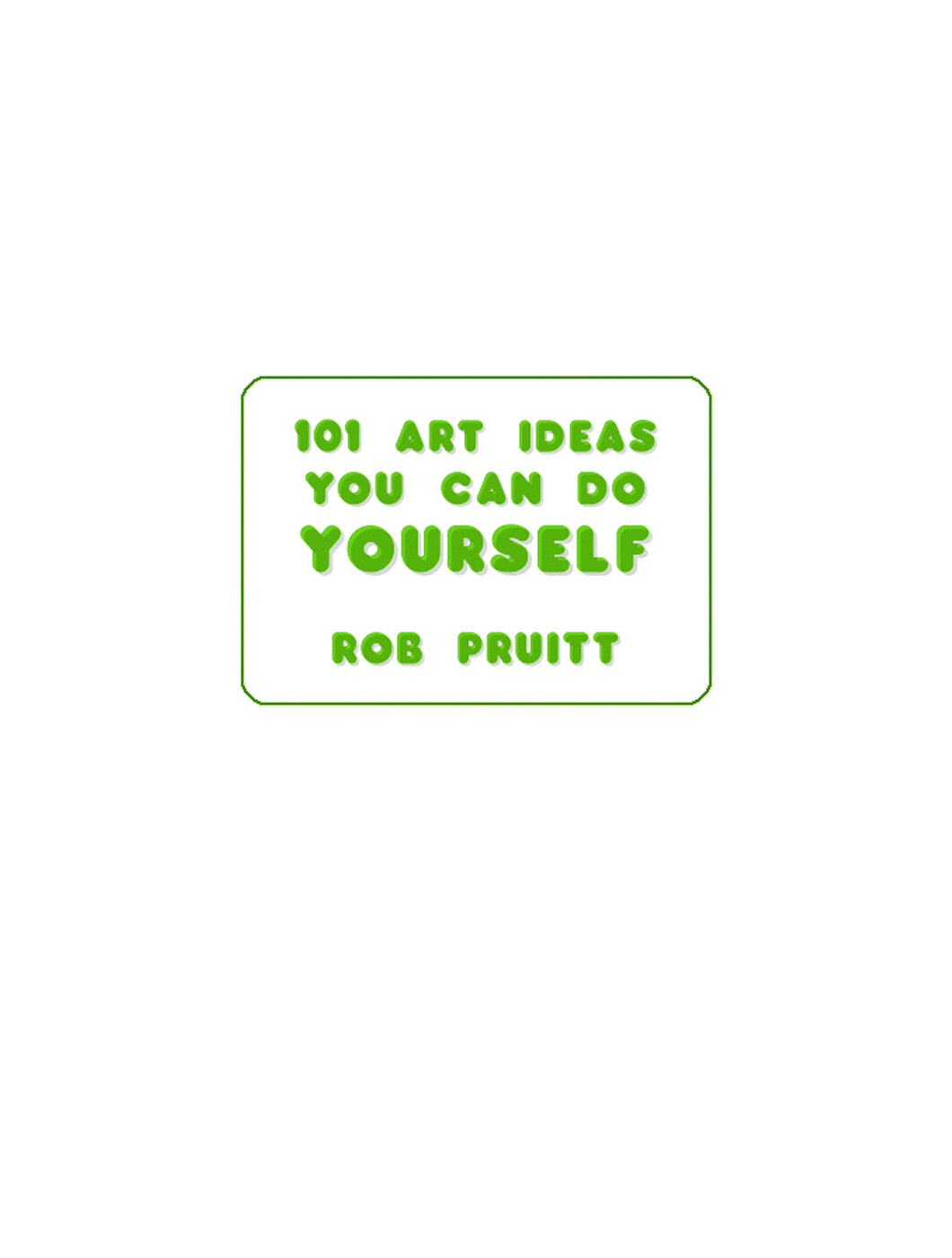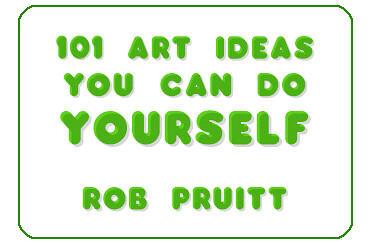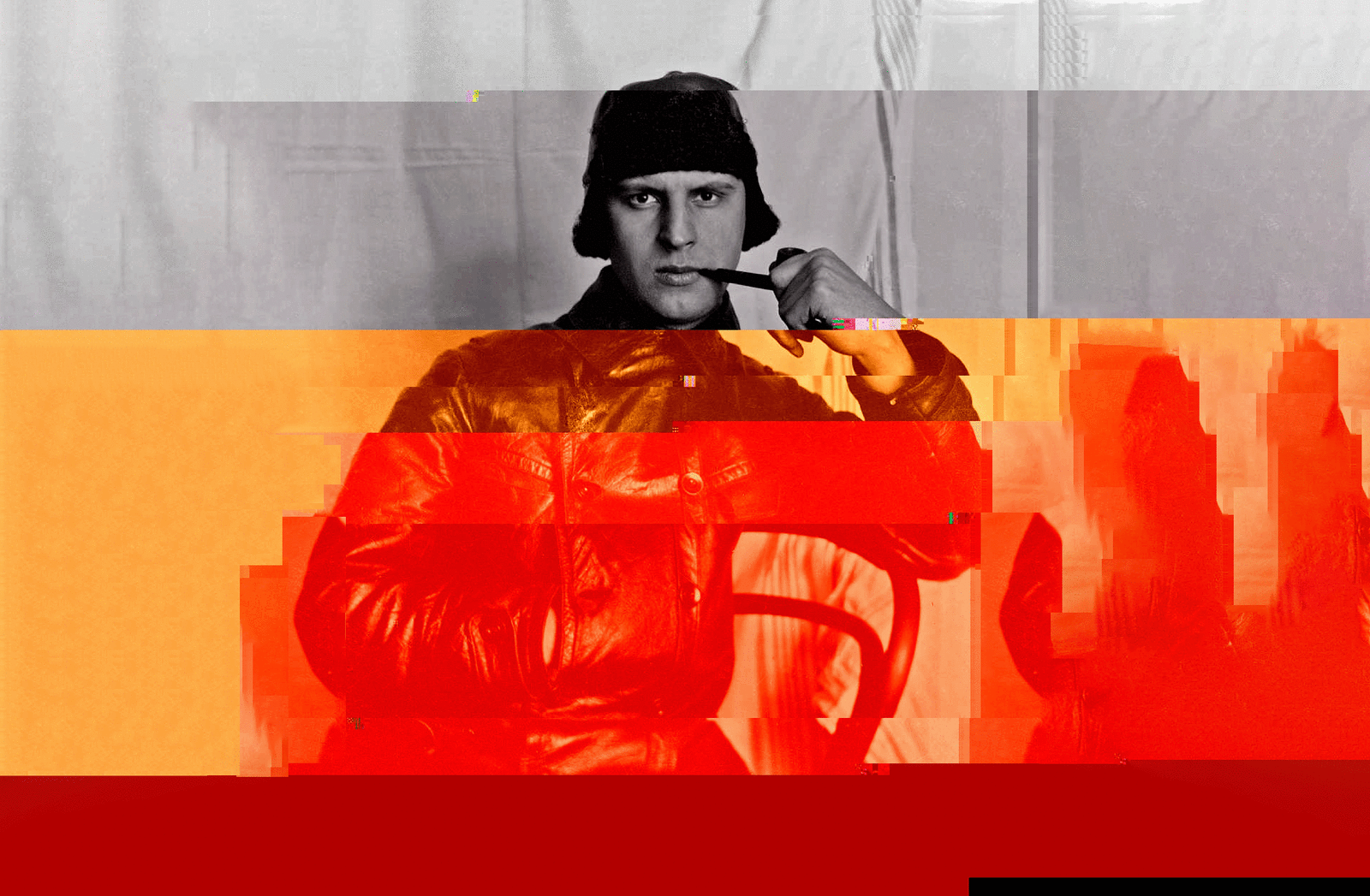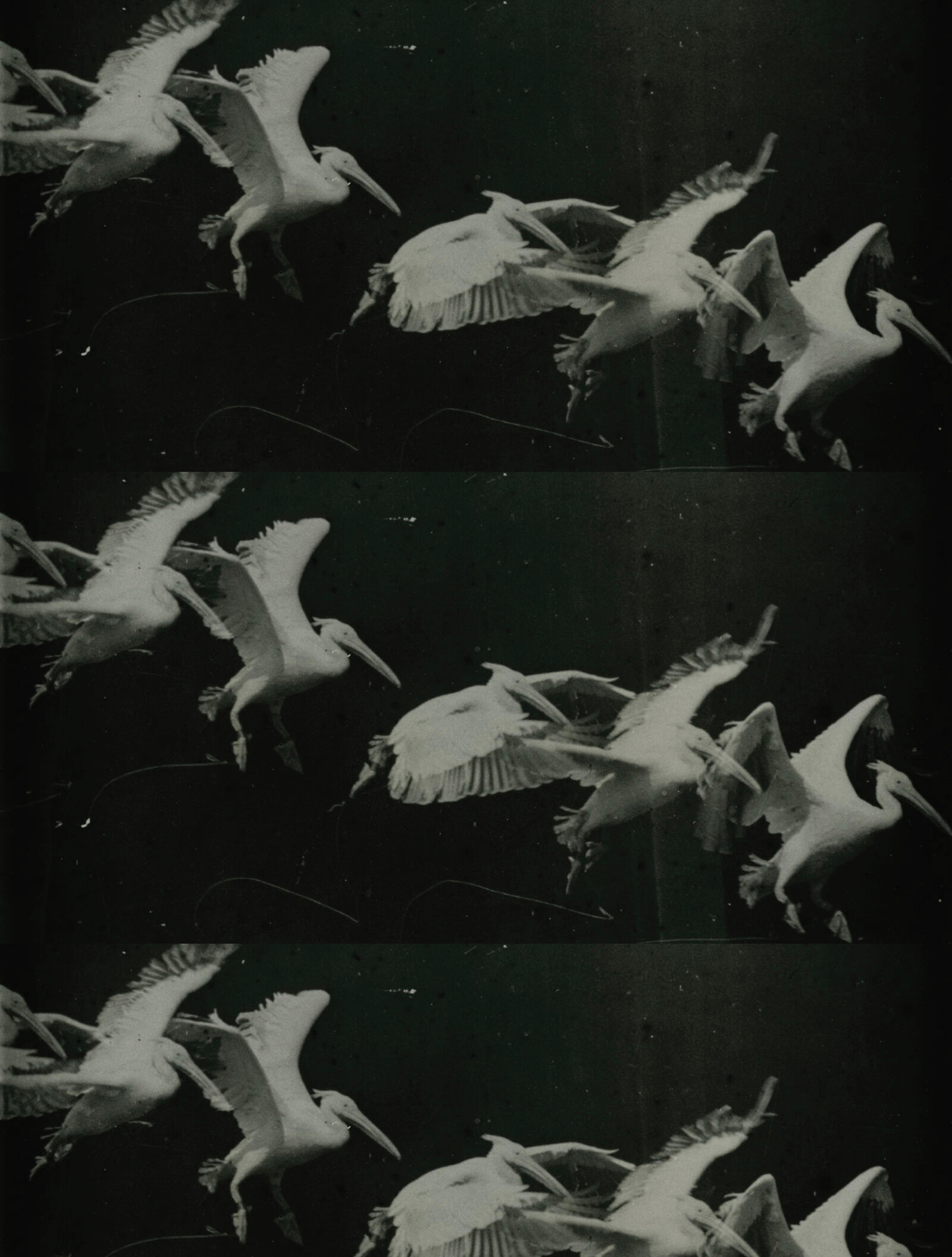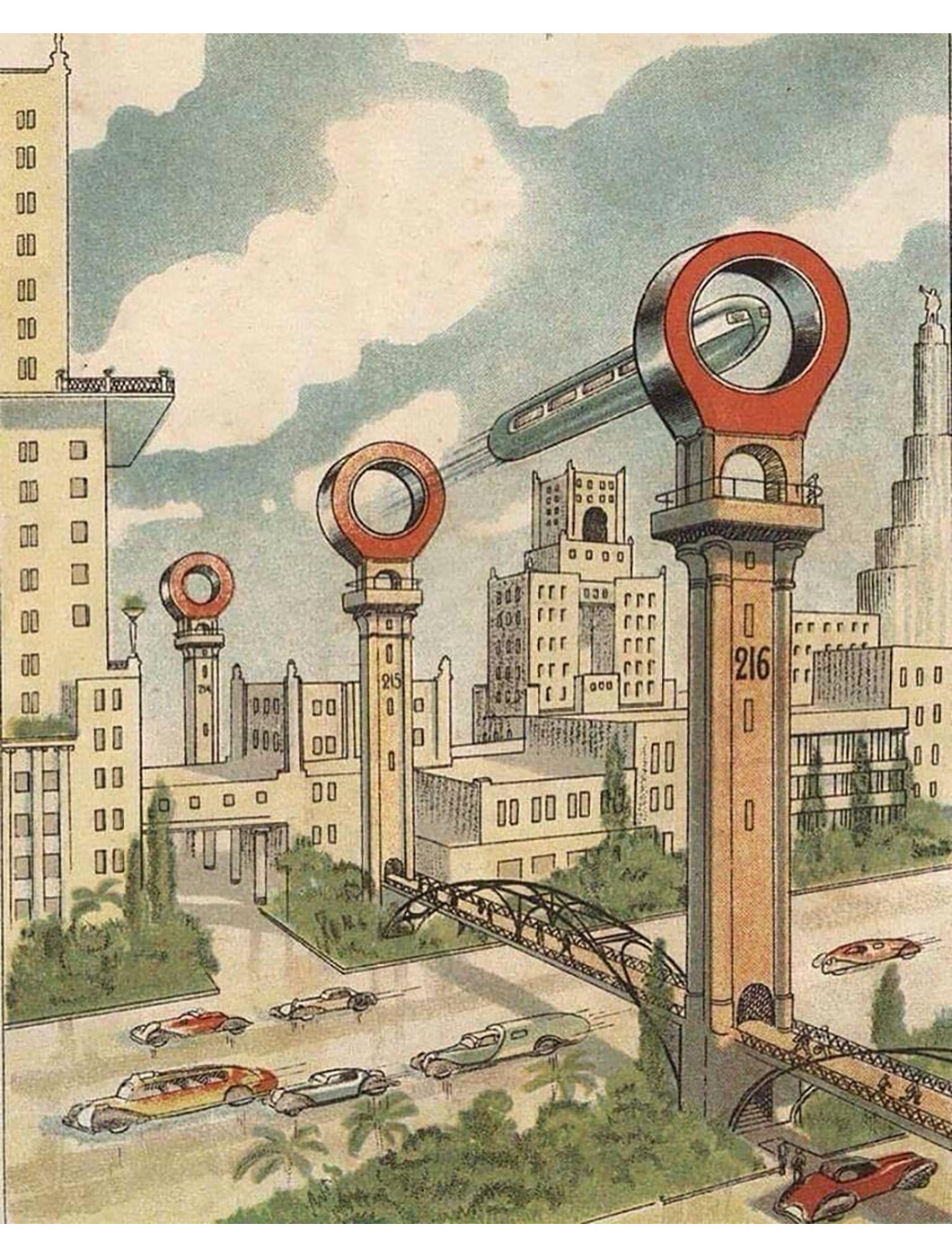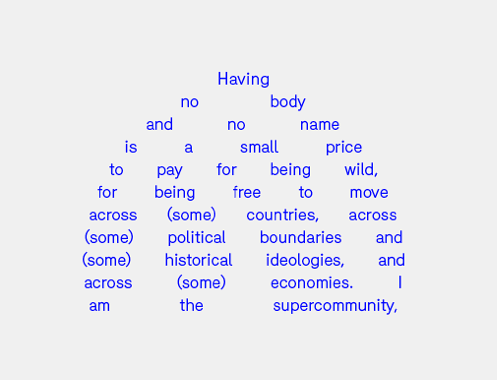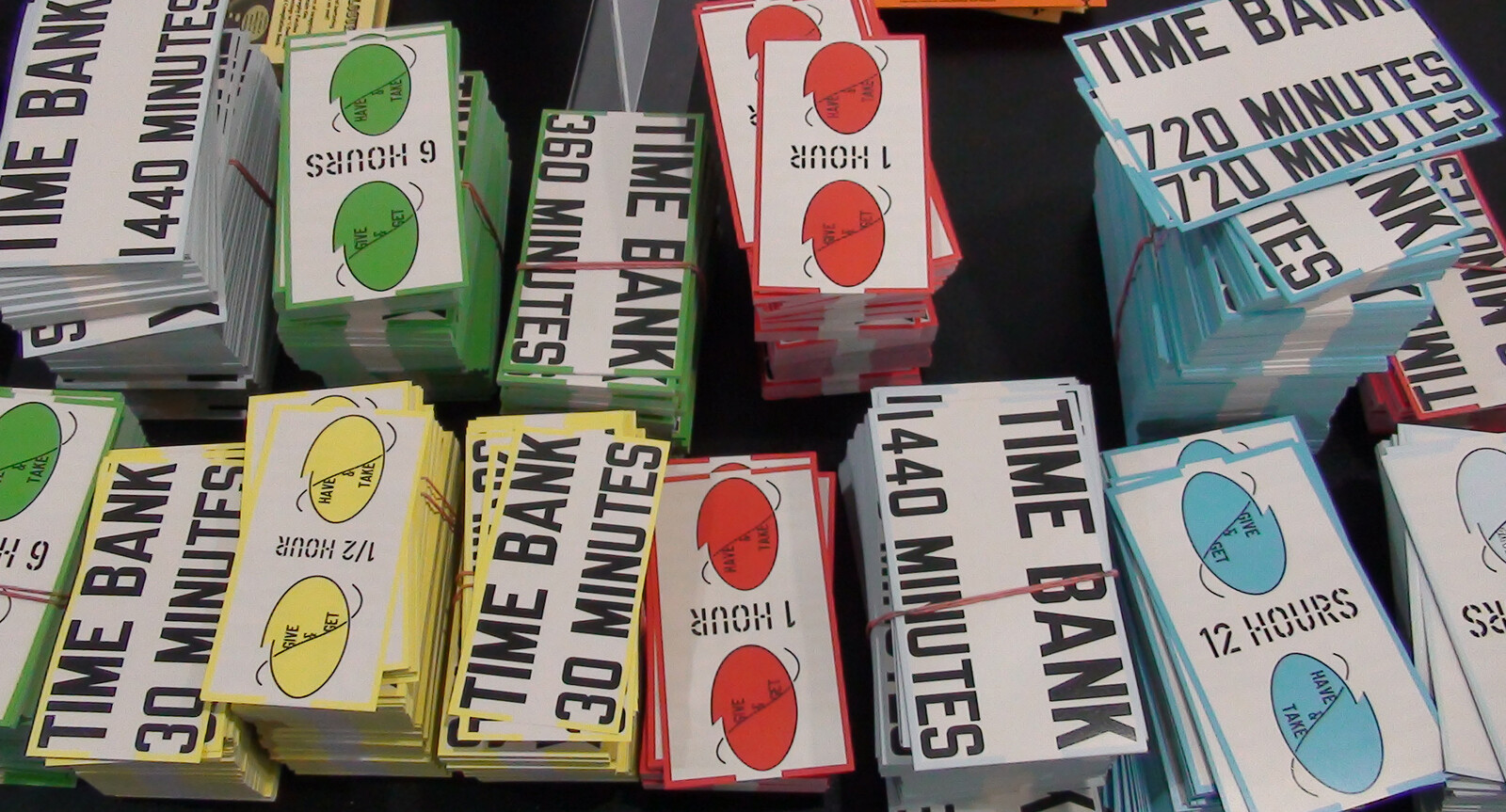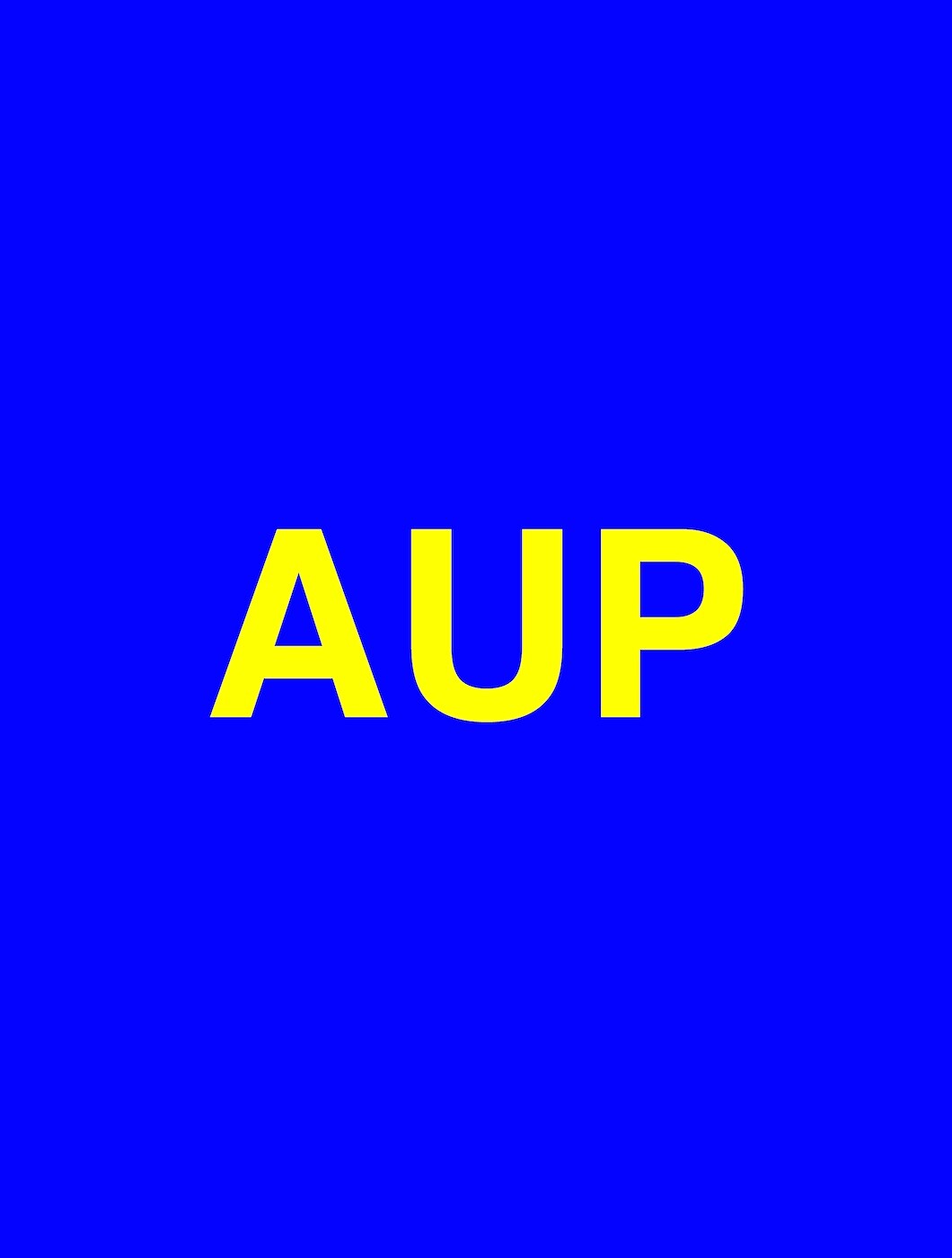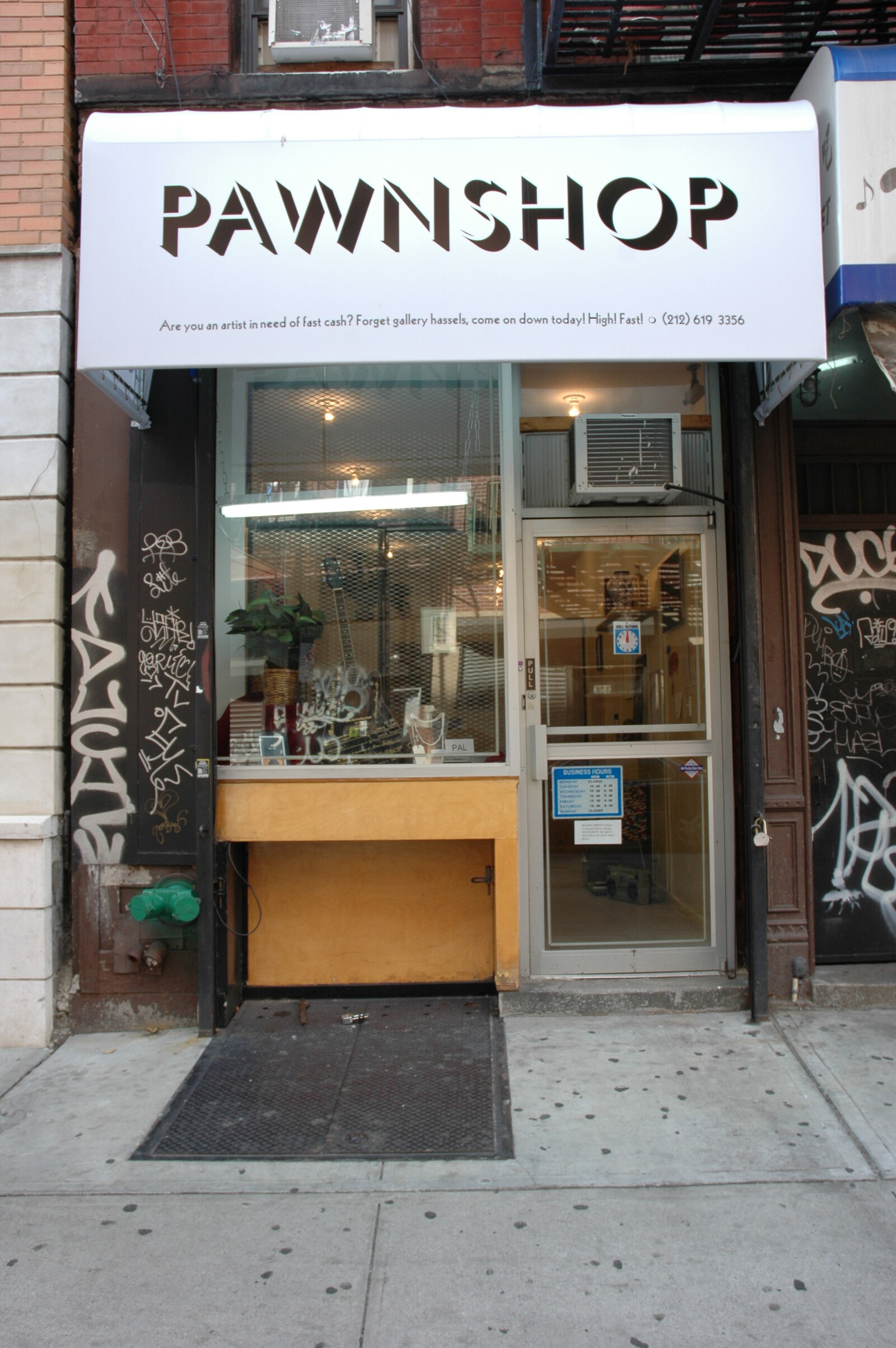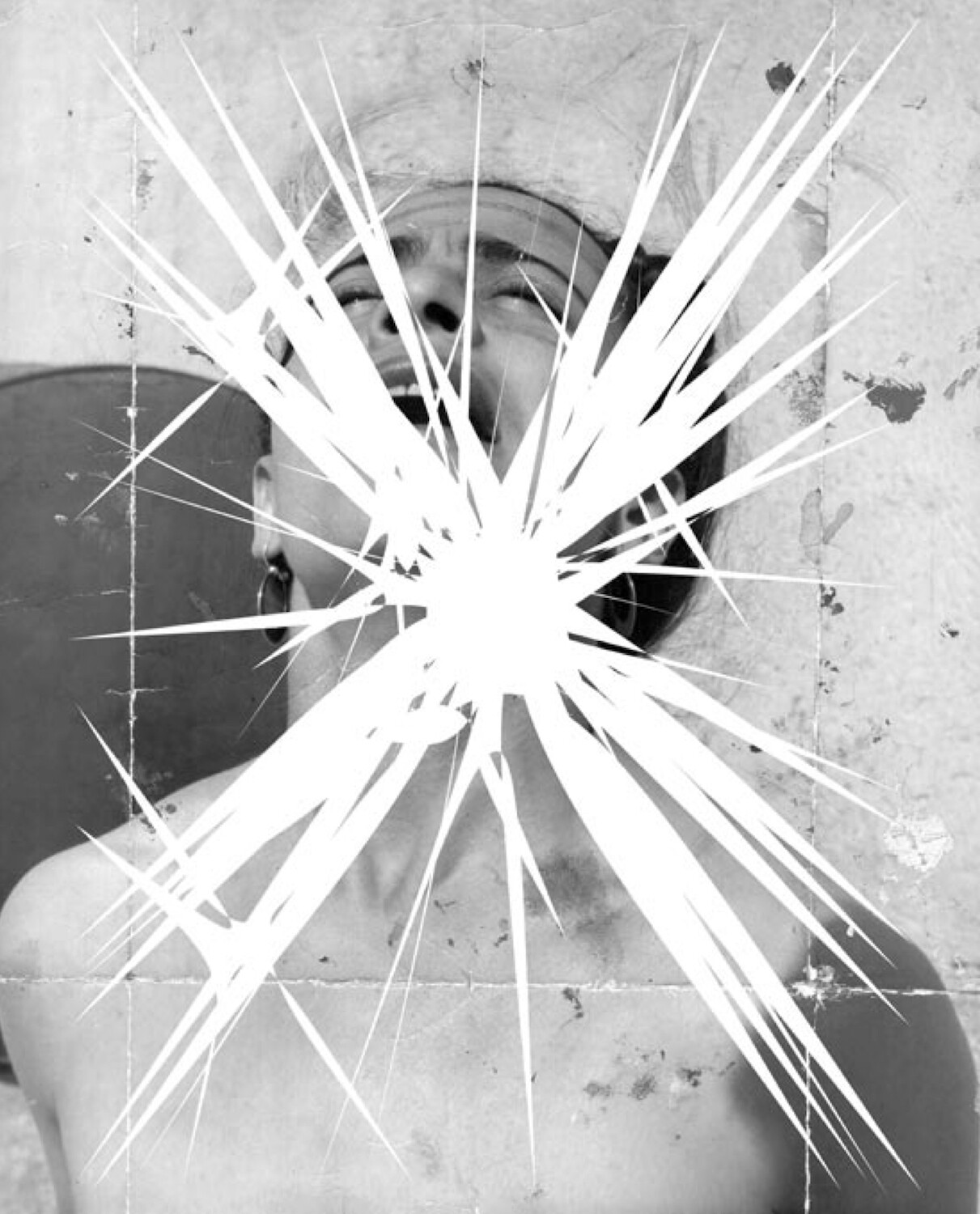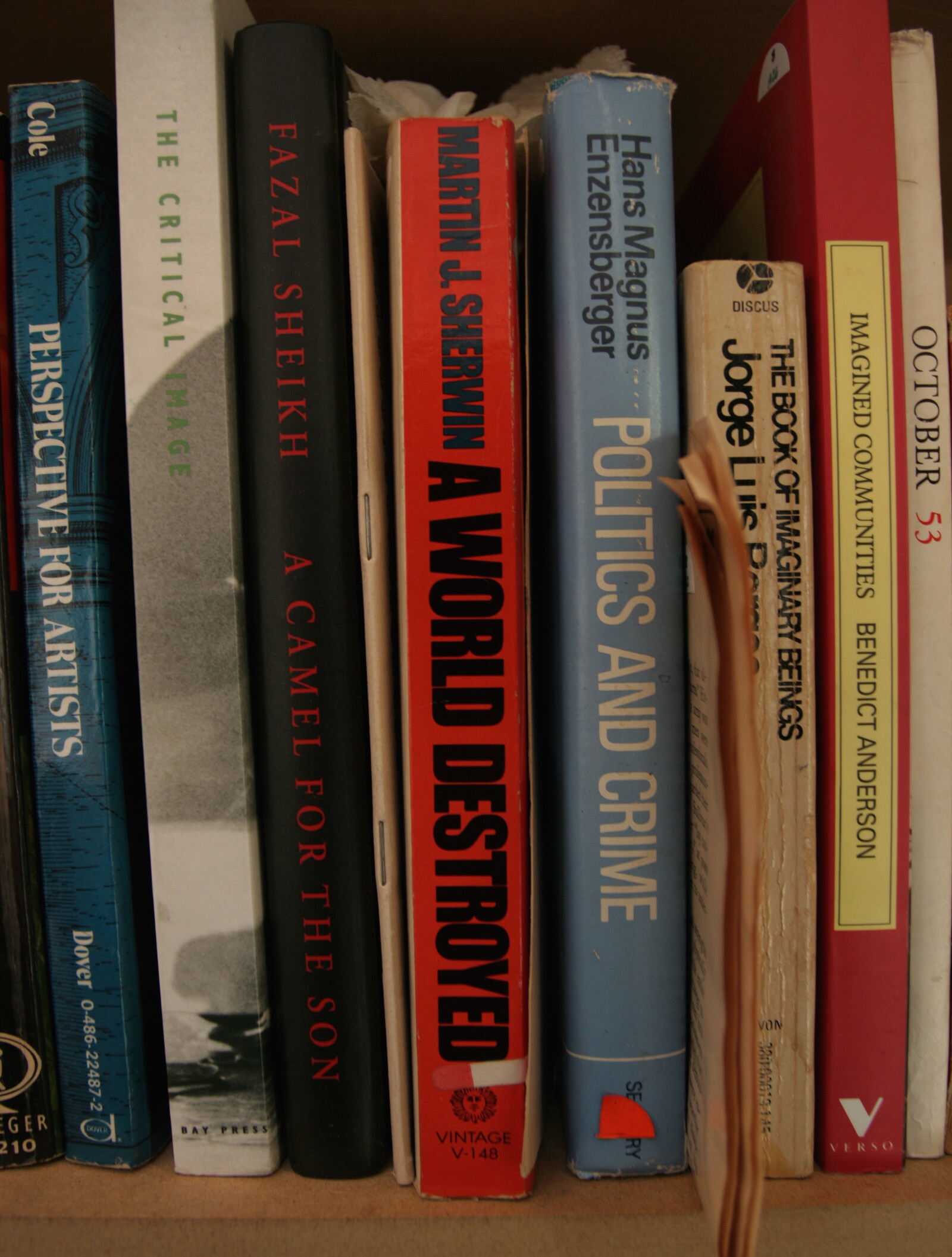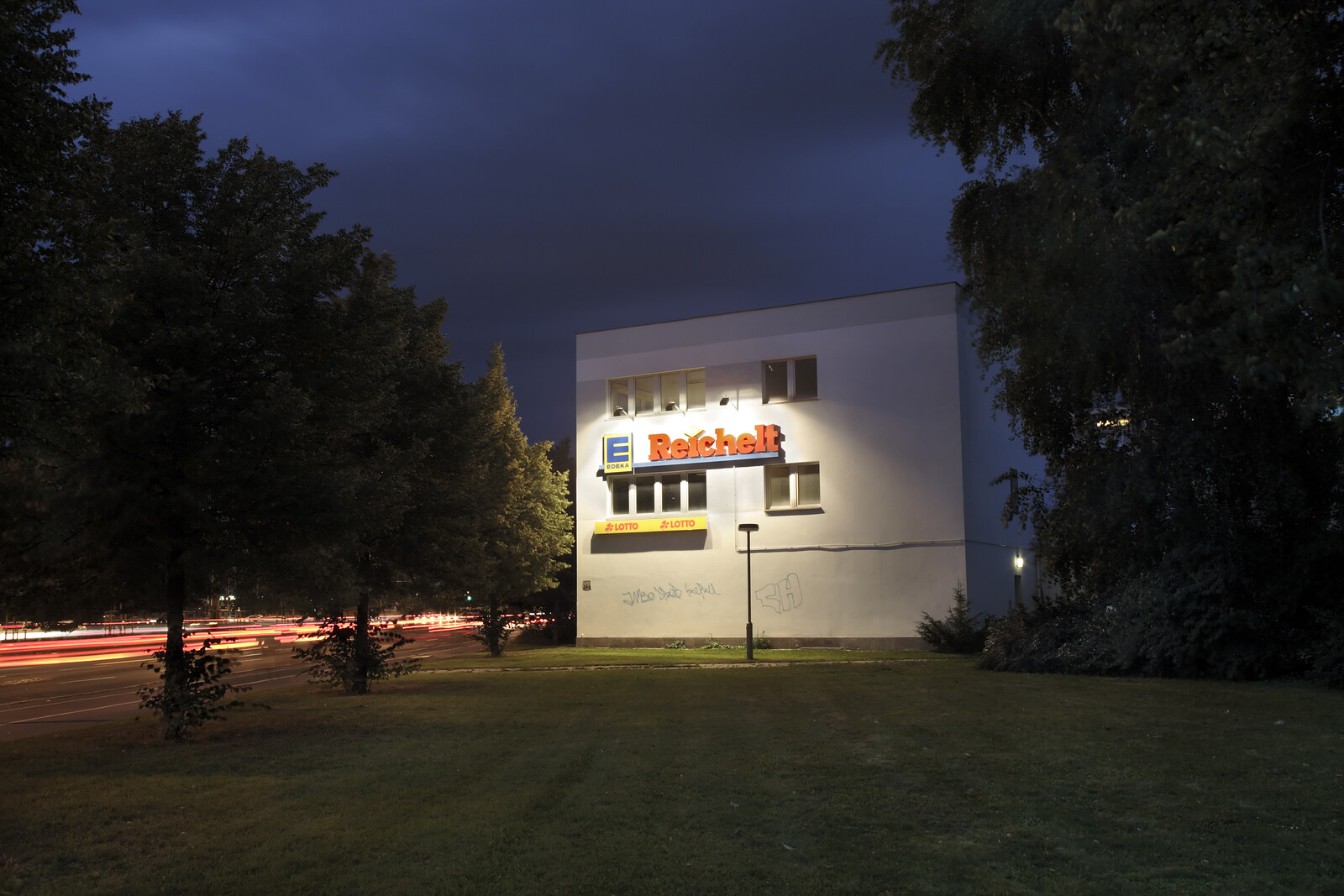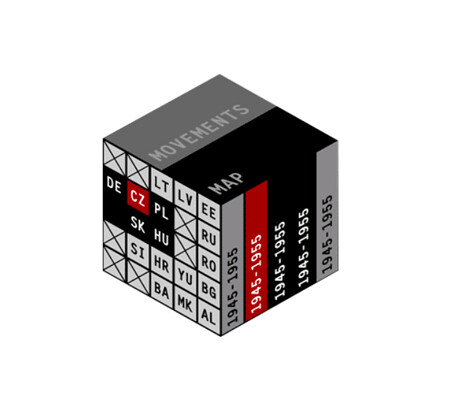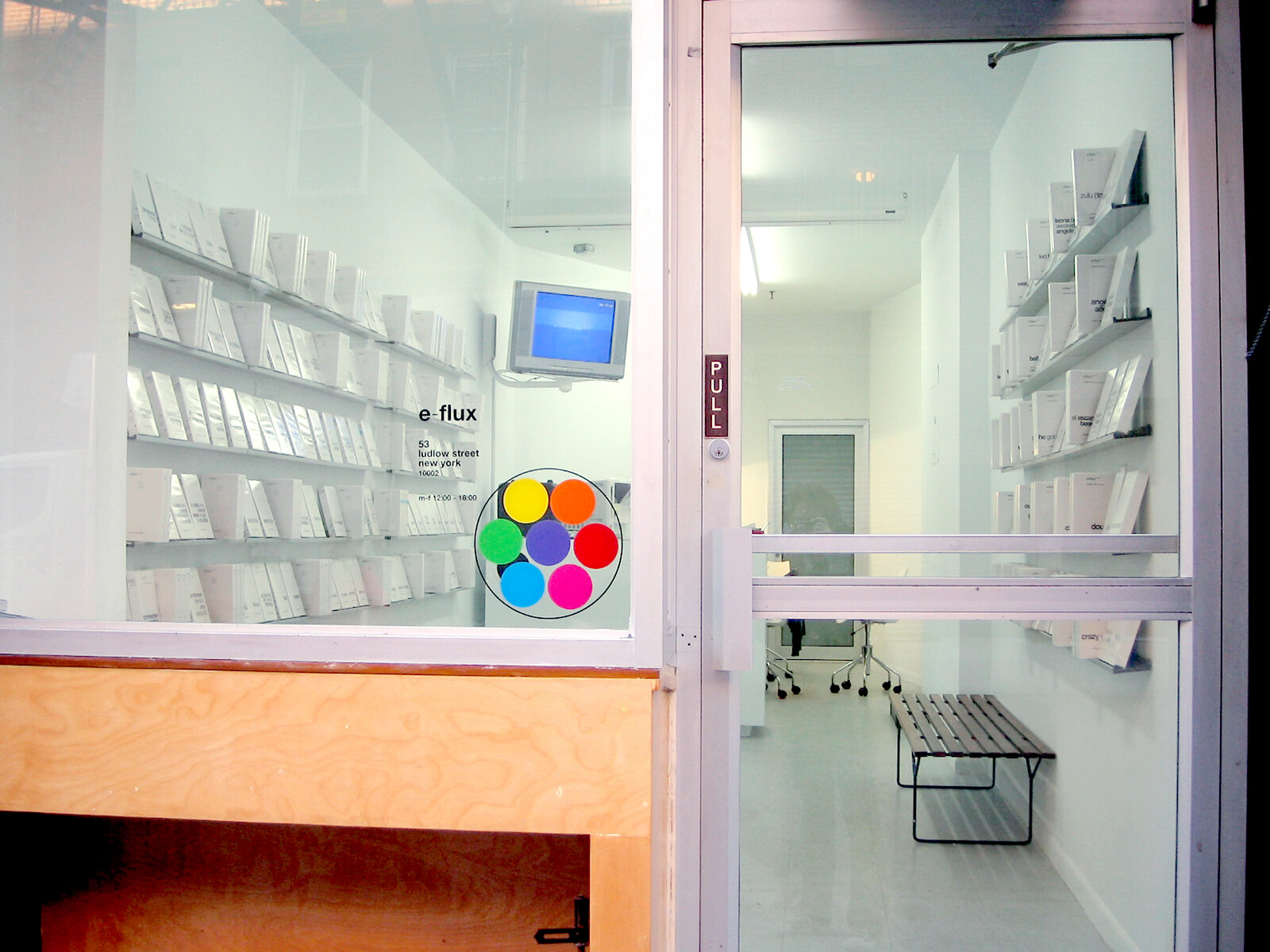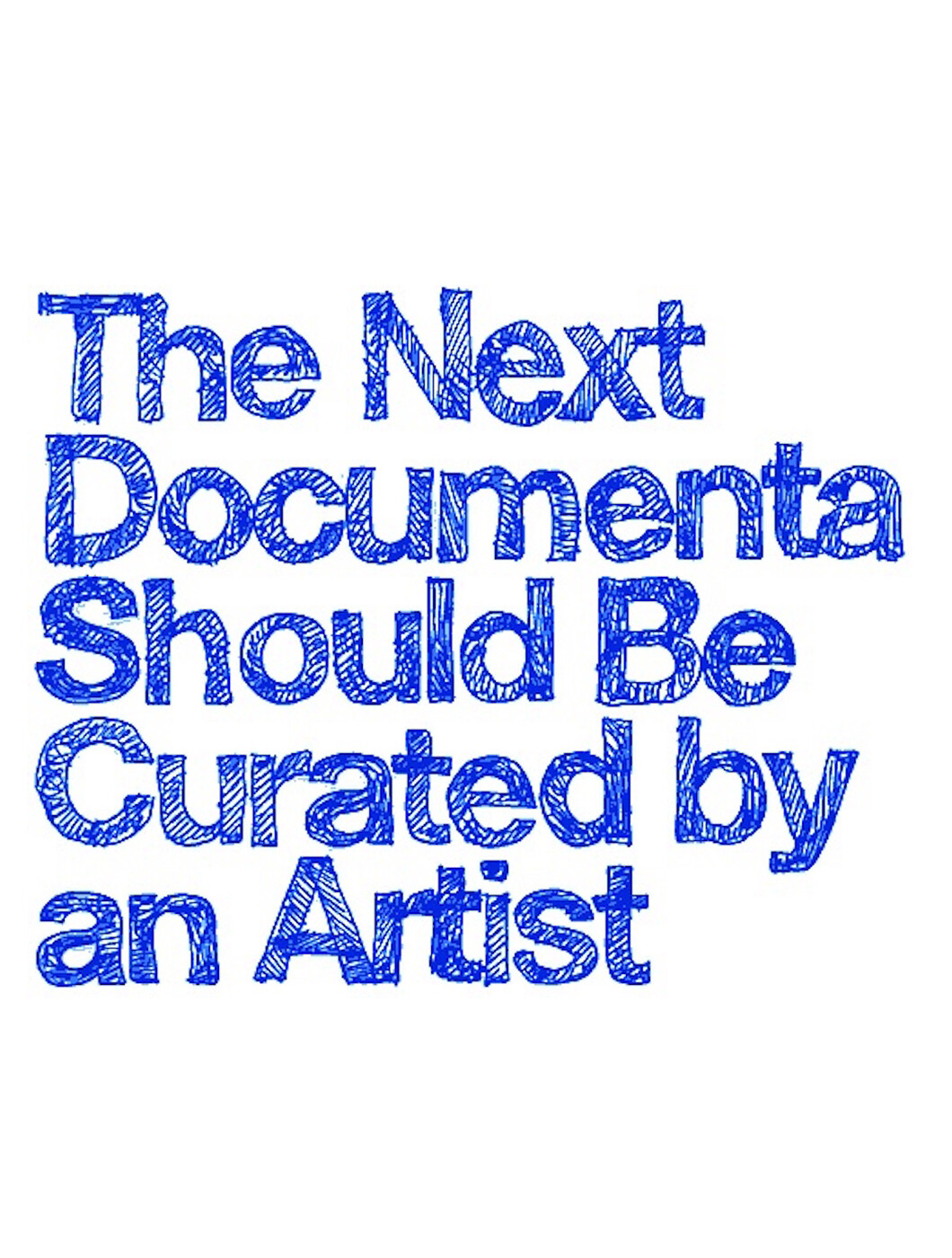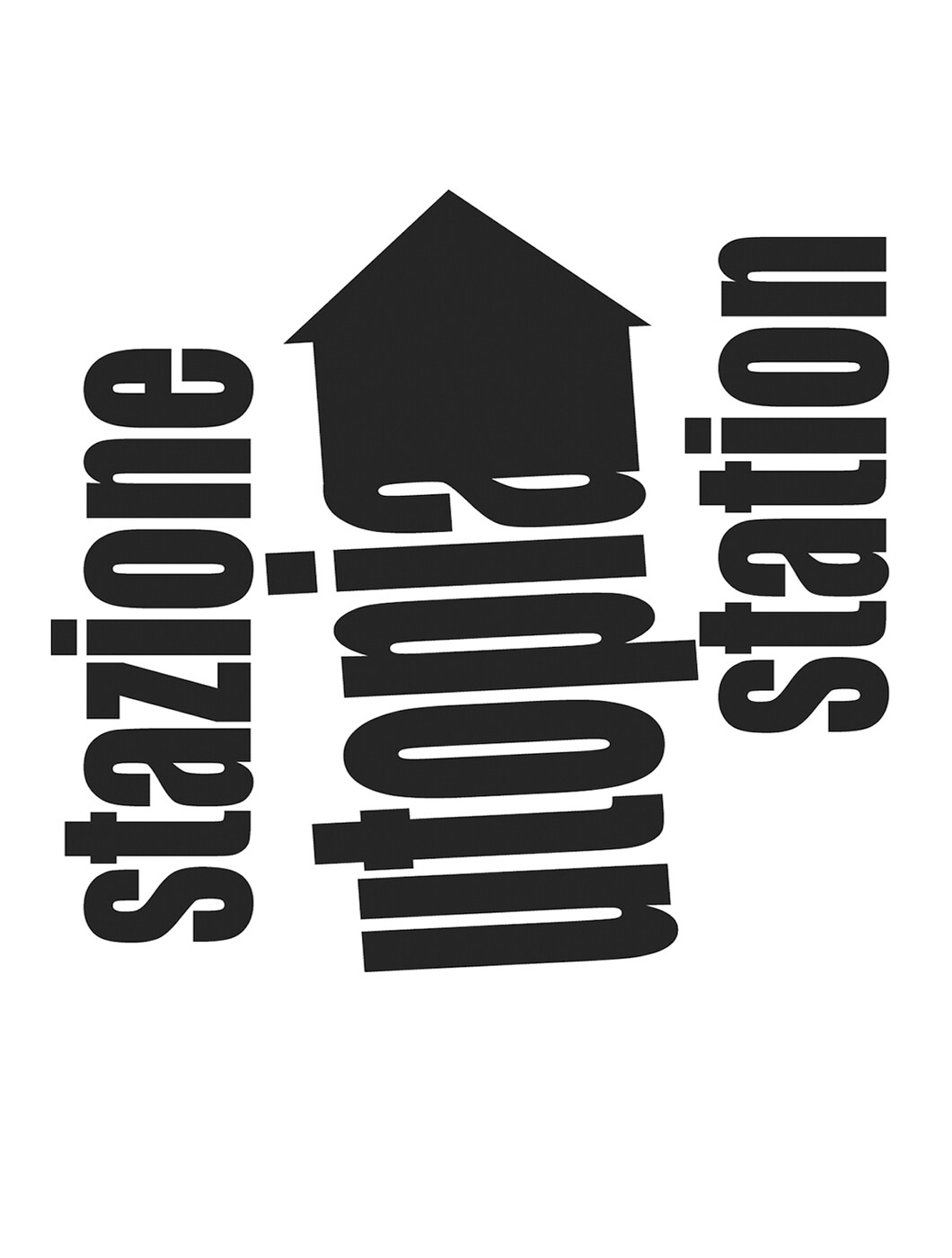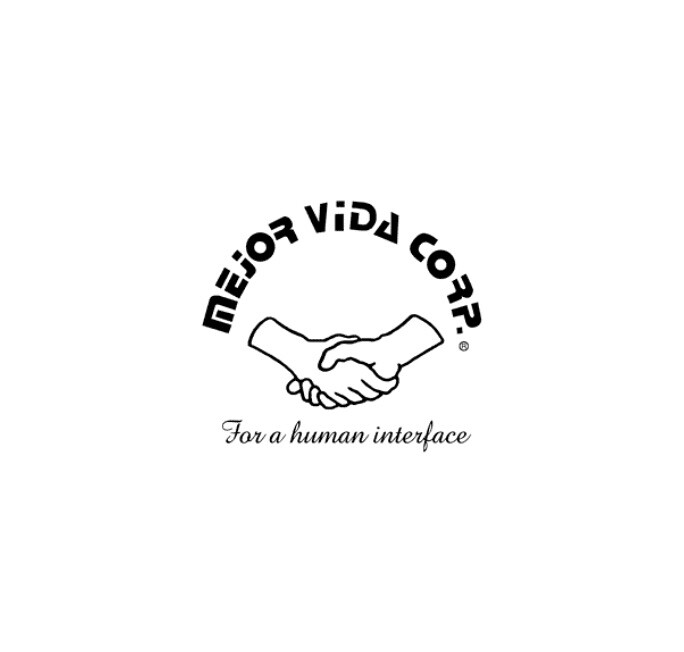101 Art Ideas You Can Do Yourself
Think you can’t be an artist? Think again. In 101 Art Ideas You Can Do Yourself, Rob Pruitt supplies the instructions and leaves the art making to the viewer.
Reviews
“Rob Pruitt” •
Jorge Luis Borges was convinced that the best metaphors are trite and well worn. ‘Life is a dream’, ‘love is a journey’ or ‘hope is a child’ are the literary equivalents to images of rainbows, sunsets and butterflies. Unashamedly, these popular visual tropes are migrating from mass and folk culture to the contemporary avant-garde where they are made even…
Jorge Luis Borges was convinced that the best metaphors are trite and well worn. ‘Life is a dream’, ‘love is a journey’ or ‘hope is a child’ are the literary equivalents to images of rainbows, sunsets and butterflies. Unashamedly, these popular visual tropes are migrating from mass and folk culture to the contemporary avant-garde where they are made even more fantastic than their natural world counterpart and more graphically seductive than their popular incarnation.
This appropriation of similes, once strictly the providence of kitsch, has nothing to do with blurring the distinctions between high and low. Instead, rainbows and butterflies have come to symbolize a magical new world where order is without hierarchies, edification is without snobbishness, prosperity is without greed, and most importantly, where imagination and consumption are exceedingly valued. This is the world of Rob Pruitt.
Pruitt acts as a conduit, shuffling images from mass culture to high art production. He also subscribes to the empowering and inventive ‘do-it-yourself’ attitude of visual design and art making. Yet what makes him more contemporary and thus more germane than the rash of late 20th-century Duchampian appropriationists is that Pruitt produces his art without the slightest glance of irony. He makes glamorous and admirable our drive for worldly success while commiserating with our search for inner virtue.
Pruitt also understands spiritual pastiche. Because contemporary culture frames most of its activities through the pseudo-spiritual lens of individualistic pluralism, the artist gives us permission to customize our lives, helping us to feel good about not only being resourceful but extravagant. He allows our political affiliations to be both shallow and profound, and, instead of challenging our material culture, insists we make our materialism and consumption something to be proud of.
101 Art Ideas You Can Do Yourself (1999) is a project for which Pruitt suggests activities that delight, amuse and charm the viewer into action, real and imaginary. For example, ‘slash open a bag of potting soil, sprinkle seeds in the wound and watch grow’ or ‘fill a desk drawer with gravel and make a secret Zen garden.’ The suggestions are always basic and he doesn’t supply us with a materials list or a colour chart. This recent exhibition of 101 Art Ideas You Can Do Yourself presented visual examples. An exercise bike facing a painting and a handsome pile of pennies tossed onto the floor to create an inexpensive Carl Andre-like sculpture for the home are just two examples of ideas made to thwart joyless lifestyles.
Enter Ailuropoda melanoleuca, the giant woolly panda whose remote mountain habitat and strange behaviour confound the most sophisticated biologists: East and West, black and white, Yin and Yang, herbivore and carnivore, private and public, cuddly and ferocious. In the 19th century it was the horse that fell victim to Western industrialism. But Pruitt’s glitter panda paintings are not Franz Marc’s blue horses. Pruitt’s empathy lies in craft, cuteness, painting and formal design, and, if the subject matter happens to touch on soft geo-political rhetoric, all the better. Unlike his glitter-encrusted cartons of Evian, Volvic and Crystal Geyser water, these pandas don’t easily slip into the heavily politicized arena where nature clashes with culture. The paintings’ clichéd imagery neutralizes their real endangered status making us less culpable in the creatures’ pending extinction. And therein lies the beauty of the clichéd image. The trite is pliable; its meaning is so depleted that we must reassign significance to it.
Back in the 1980s the work of Pruitt & Early was out of kilter with the time. Either they weren’t ironic enough in their investigations into codes of consumption or they were too obvious in their undiscriminating approach to popular culture. The end came quickly when the pair bravely celebrated the commodification of black culture and its marketing push on educated, upper-class white teens. Accusations of political incorrectness brought the collaboration to a halt. Less than 15 years later, Pruitt, on his own, offered the public Cocaine Buffet, a line of coke stretching down the middle of an elongated 16-foot mirror. This feast operated on several levels: a Minimalist floor work, a generous treat to anyone who would get down on their knees and be photographed snorting and an antiquated cliché from the 1980s when capitalism was secular and uninventive. Pruitt’s recent Evian water fountains offer a similar gluttonous indulgence. Yet in both cases the work’s beauty softens its moralizing forces.
“Top Ten Rob Pruitt”
Rob Pruitt’s “Psychic Predictions for the New Millennium and Things to Do with Lemons” is currently on view at the Cabinet Gallery in London. His most recent show in New York, “101 Art Ideas You Can Do Yourself,” was up last year at Gavin Brown’s Enterprise. 1 POLAND SPRING WATER (20 OZ. BOTTLE, $1) The consumer culture that polluted the…
Rob Pruitt’s “Psychic Predictions for the New Millennium and Things to Do with Lemons” is currently on view at the Cabinet Gallery in London. His most recent show in New York, “101 Art Ideas You Can Do Yourself,” was up last year at Gavin Brown’s Enterprise.
1 POLAND SPRING WATER (20 OZ. BOTTLE, $1) The consumer culture that polluted the planet has created an antidote by branding nature. As Coke/Pepsi was to the Pop ’60s generation, bottled water is the lifestyle beverage of the present. A fashion accessory, the simplest elixir, and a symbol of purity, each bottle of water purchased elicits reflection on nature and its fragility.
2 CELEBRITY CAUSES / CAUSES CÉLÈBRES, NOW AND FOREVER Linda McCartney vegetarian frozen dinners, Paul Newman chocolate bars (all proceeds to charity), Ben & Jerry, The Mike Douglas Show with John Lennon and Yoko Ono (on Rhino Home Video: “Five days that changed the course of television,” featuring on-air phone calls to strangers to say “I love you, pass it on” and macrobiotic cooking with Black Panther chairman Bobby Seal), Ellen DeGeneres, Lisa Simpson, farmer Jose Bove bulldozing a new McDonald’s outside of Paris before billions could be served, Sinéad O’Connor tearing up a picture of the pope on Saturday Night Live, Pamela Anderson Lee’s implant redux.
3 “UNMISTAKABLY MACKIE,” FASHION INSTITUTE OF TECHNOLOGY, NEW YORK Seeing in person all the gowns hazily recalled from a childhood spent in front of the TV was for me like a religious experience. Highlights included Carol Burnett’s Eunice dress and a pyramid of Cher gowns (I got thrown out of the exhibition when a guard caught me trying on the “nude dress” that she wore on the cover of Time).
4 “EPIDEMIC! THE WORLD OF INFECTIOUS DISEASE,” MUSEUM OF NATURAL HISTORY, NEW YORK A fascinating journey through the myriad germy worlds of microscopic psychedelia—a cold sore doesn’t look so bad when you examine it very, very closely. Immediately after the exhibition, I went to the nearest drug store and bought a bottle of
5 LYSOL ANTI-BACTERIAL HAND GEL, which, without water, “kills 99.99% of germs that may cause illness in under 15 seconds.”
6 ANNIKA STROM’S “WINDOW PILLOWS” Elbow rests that soften the sill to provide a more comfortable perch for voyeurs. A tradition in her native Sweden, these craftsy cushions frame the outside world as an ever-changing work of art.
7 JONATHAN HOROWITZ’S UNIVERSAL CALENDAR A new and improved version of the Gregorian calendar, the Universal calendar excises religious and political ideology. The birth of Christ is replaced by the birth of earth, and months are renamed for real things like air, sport, sex, and money. According to Jonathan’s system, this issue of Artforum was published in the month of “animal” in the year 4700006235.
8 DRAGON NATURALLYSPEAKING VOICE-TO-TEXT SOFTWARE (DRAGON SYSTEMS) turns your computer into a stenographer for around $200 and i’m using it right now hey rob what are you doing oh hi jonathan i’m just finishing my list for that dumb magazine oh perfect timing am i on it you sure are i’m no welsher and i already spent the money you gave me rob remember you told danny mcdonald you’d put his mended veil jewelry line on the list yeah i know but there are so many things i love and admire plus so many drunken promises that i made at parties that i don’t know how i’m going to fit everything on like for instance alex bag’s drug gift basket and amy gartrell’s edible alien autopsy and hiroshi sunairi elizabeth peyton and everything she does rob don’t forget rachel harrison’s collection of remote controls and lucky debellvue’s pipe cleaner sculptures and ricci albenda’s portals and lily van der stokker’s old people making spectacularly experimental art i know i know i love those things and lucy barnes’s new store too and gavin’s bar and my sister’s new baby duncan oh well what can you do.
9 BRUNO MUNARI, MY FAVORITE ARTIST This little-known artist was a pioneer of aesthetic diversity and humanist conceptualism. Starting as a Futurist in the ’30s, he went on to originate entirely new concepts of artmaking, including the series “Unreadable books” in the ’40s, public fountains and Fossils of the year 2000 (useless machines) in the ’50s. Xerox art in the ’60s, and leading children’s workshops in museum in the ’70s. Every time I’m at a loss for artmaking ideas, I take his catalogue raisonné off the shelf.
10 HSING-HSING, R.I.P. Black-and-white and subsisting only on green (bamboo), Hsing-Hsing was a majestic emblem of natural and political harmony. Along with his mate Ling-Ling, he led the martyred public life of a celebrity on view, sacrificing his private natural habitat to become a symbol of international diplomacy, wildlife preservation, and cuddliness.
“Rob Pruitt” •
There’s great irony in the fact that Rob Pruitt is the man putting together the Guggenheim’s First Annual Art Awards, a sort of tongue-and-cheek version of the Oscars for contemporary American art. It’s the kind of irony more befitting a Hollywood film script than the New York art scene. On October 29, before an assemblage of heavyweights in the…
There’s great irony in the fact that Rob Pruitt is the man putting together the Guggenheim’s First Annual Art Awards, a sort of tongue-and-cheek version of the Oscars for contemporary American art. It’s the kind of irony more befitting a Hollywood film script than the New York art scene. On October 29, before an assemblage of heavyweights in the Guggenheim Museum rotunda, faux-champagne-bottle-in-ice-bucket lamp awards will be doled out to the winners of Solo Show of the Year, Group Show of the Year, Curator of the Year, and Artist of the Year, among a myriad of other categories. While a committee helped select the nominees, the awards show itself was 45-year-old Pruitt’s brainchild—his way of giving back to the art-world community that has made him one of its own unorthodox, uninhibited stars.
In the late 1980s, the Washington, D.C.–raised Pruitt was, along with Jack Early, part of the collaborative art team Pruitt-Early, a duo that was instantly touted as a pair of intrepid, iconoclastic newcomers—that is, until a 1992 show at Leo Castelli Gallery, where the two artists paid tribute to black culture by splashing paint on foil, shrink-wrapping posters of famous African Americans, and supplying their own rap soundtrack. Today that kind of show wouldn’t read as much of a shock, let alone a scandal, but in the early ’90s, the culture was still fully entrenched in the dicta of political correctness. Protests ensued, their work was accused of being racist, and, soon after, the pair disbanded.
Summarily pushed out of the art world, Pruitt took several years to find his legs again. In 1998, at a group show at an artist’s studio in New York’s Meatpacking District, he presented Cocaine Buffet a minimalist line of cocaine that stretched 16 feet across the space, as a sort of peace offering to the art world (which greedily accepted). Since then, Pruitt has thrived—or rather sensationally rebuilt his reputation—largely on that same ability to shock. His glitter panda paintings, first shown in 2000, might be his most recognized pieces to date. But in the last few years, he has also transformed a Victorian house in upstate New York into a Goth art installation, fashioned giant character-driven tombstones for everyone from Anna Nicole Smith to Charles Schulz, and created a sweeping, diaristic mural out of 3,000 iPhoto photos. Actor James Franco recently caught up with Pruitt, who was tending to preparations for the Art Awards, to discuss the festivities—as well as the gray area between celebration and critique that Pruitt himself has explored throughout his own career.
JAMES FRANCO: It’s funny that we are doing this on the phone because we both live in New York City.
ROB PRUITT: I’m in Montauk. Where are you?
FRANCO: I’m in Asheville, North Carolina, near where Black Mountain College used to be. I’m here for a poetry program. F. Scott Fitzgerald used to come and stay at the hotel I’m in because his wife, Zelda, was in a nearby institution. So, tell me about the Art Awards at the Guggenheim.
PRUITT: The Guggenheim came to me and wanted to know if I had any ideas for reimagining their annual fundraiser because I guess it’s just basically been a gala ball for many years. I thought it would be a nice idea to have an art-world Oscars with different categories … It would basically follow the format of the Oscars as closely as we could and make it this super-entertaining parody. But I wanted it to have its own integrity as well, where we could do it year after year and the recipients would be proud for having won and would display their trophies on their mantels.
FRANCO: I guess England has the Turner Prize, so it’s not that crazy.
PRUITT: Yeah, it’s not completely off the wall.
FRANCO: So how did you pick the nominees?
PRUITT: We established a committee to come up with the nominees for the different categories. I don’t know at this point who’s going to win what. I’m just now in the midst of producing the show, finding hosts and presenters, and building a set.
FRANCO: Will there be live entertainment and performance art pieces or something?
PRUITT: Yeah, there will. Maybe we’ll ask Pharrell to perform. I’m not really sure. Do you think you would consider presenting an award?
FRANCO: I’d love to do that. But I do think it’s interesting that now you’re celebrating the art world after you’ve spent all of this time in your career fighting it. You’re in Montauk right now, but I know you used to have a house in upstate New York. I never saw it in person but it was something of an art piece itself, as I understand.
PRUITT: Yeah. We bought a dilapidated old Victorian house that sat high on a hill in this village in upstate New York called Fleischmanns. The town was sort of set up by Charles Fleischmann, the founder of the Fleischmann Company famous for its yeast, and his family had a couple big mansions and paid for the public parks. The town fell into disrepair over the past 80 years, and Jonathan Horowitz and I thought it would be really cool to buy this very prominent house and set it up as like a public art piece that could possibly help revitalize the village.
FRANCO: I’ve seen pictures of the inside of the house, with all of the lamps and chandeliers, many of which were bought at Goodwill and made part of the artwork. I was thinking about that in relation to your work with the panda glitter paintings …
PRUITT: Well, there is a connection. There is something that runs through all of my art-making practices—at least the paintings and sculptures—which is that they are basically blow-up versions of dining-room-table craft projects. Like, I’ve made hundreds of paintings out of glitter. I’ve really enjoyed letting the world know that not everything is so mystified or so regulated to expertise—that you can make something really beautiful with a little ingenuity and some supplies from Michaels [craft shop].
FRANCO: It’s like your 1999 piece 101 Art Ideas You Can Do Yourself. One aspect of it is a Martha Stewart–type approach, right? That anybody can do it, that art isn’t so mysterious and inaccessible.
PRUITT: Yeah, that’s exactly it. When I sat down to make the 101 Art Ideas project, I was really thinking about how my parents didn’t have the advantages that I had of going off to college and studying something that is really very impractical or nonessential in many respects: an art-school education. So I was thinking, my parents provided me with this gift of being able to do exactly what I want to do, which is being an artist, so 101 Art Ideas was my gift to them. It was my attempt to explain to them what it is that I do. Your average person probably will never go into a New York gallery and see what’s being made today. It’s still a closed-off world. So I wanted to make the statement that art is really a lot more accessible than most people would imagine—that it’s not completely inscrutable and esoteric and just for the rich and educated. In the end, art is really just about developing a sensitivity to your environment and making comments about the world you’re living in in a beautiful way.
FRANCO: But I think there’s also another side to that project. It seems to me that while you’re asking everyone to engage in the world, you’re also giving them a way of critiquing it. It’s almost 101 formulas for breaking out—like, you suggest sitting on the toilet backward or spending an entire day in a costume. That’s obviously a way of breaking out of the monotonous way of proceeding.
PRUITT: Yeah. It’s a way of shaking up your complacency. It’s a given that everyone uses the toilet at least once per day, but probably not too many people sit on it backward. So a mundane activity can suddenly be read in a whole new way with one simple gesture.
FRANCO: I don’t know if you want to talk about your infamous show at Leo Castelli Gallery in 1992, but this toying with the boundaries of the art world—and coming in and out of it—is a constant theme of your career, isn’t it?
PRUITT: I think that the point that you make is a pretty exciting one within the world of Rob Pruitt. I think 101 showed that I am rather nonessential—like, you don’t need to look at my work, you can do it yourself. I’m not really interested as an artist in making a masterpiece. I pretty much show all of my output. I don’t throw anything away. You mentioned the Castelli show, and if one were to find flaws with that show or see it as a mistake, then that’s fine by me. I like this idea of learning and growing up publicly and not cleaning up the process so that everything that enters the gallery space is flawless and perfectly done. I mean I’m making my first monograph right now, which comes out in April.
FRANCO: It’s called Pop Touched Me?
PRUITT: Yeah. And when I sat down with my editors and looked at everything I’ve signed my name to over the last 17 years, I thought a lot of it wasn’t that good. But I wouldn’t take any of it back. I’m not embarrassed. I feel like I’m learning along the way, and that trying is better than not trying at all. Some of the art I’ve made, I’m really proud of. But some of those things are total clunkers.
FRANCO: You once said that your 1998 piece Cocaine Buffet was, on one level, a publicity stunt, but it also had art history built into it: minimalism infused with contemporary culture visibility.
PRUITT: The cocaine thing was in a sense a publicity stunt, but it was also a thinly veiled self-portrait or a confession. I mean, it was very autobiographical. Not that I loved drugs, but I was no longer collaborating with Jack Early. I was trying to carve out my own identity. And that involved a couple of problematic situations for me. If you rose to some popularity or notoriety as part of a collaborative team, how do you reemerge with a solo identity? How do I maintain things about Pruitt-Early that I still feel close to, but create a new voice that’s exclusively my own? The Pruitt-Early collaboration ended because the show at Castelli was so badly received. Most of the critical responses to it were that it was racist, an abomination. How could a project like this pass the inherent screening that the art world has of only showing the best, most vital things? How could such a racist project actually end up in these hallowed halls of the Castelli Gallery?
FRANCO: [laughs] How did it go up?
PRUITT: Well, Leo came to us because we had established a certain amount of success and renown in a very short period of time.
FRANCO: With those sculptures for teenage boys?
PRUITT: Yeah, Artwork for Teenage Boys. Those images weren’t generated by us—we just sort of collected and organized them. I think Leo Castelli had an affinity for the way they looked because it was reminiscent of work he had pioneered in the 1960s, so he offered us a show without knowing what the project would be. As it was being developed, he did make studio visits. I think he thought that it was going to be very exciting. We were simply trying to make a project that celebrated the very rich black creative culture that emerged after so much slavery, racism, and oppression. That’s truly what we were trying to do. The fashion of the day was to make identity-issue work, you know—if you were part of a particular group then you would make work about your participation in that group.
FRANCO: Yeah.
PRUITT: So as two white, gay men, it was strange to people that we were making this body of work, celebrating achievements of black American culture. I think the exhibition did fuel the fires of the racist reading, because we shifted tone. I mean, Artwork for Teenage Boys did involve pretty offensive, sexist, misogynistic expressions of white, male teenage culture that we’d basically gotten from T-shirt iron-ons and rock music lyrics. That was our first project right out of art school—not that I’m making excuses for it. I thought it was pretty good. We were trying to make a portrait of this segment of the population who was the enemy, who harassed us in high school, who beat us up behind the gym. It was an interesting exercise in politics and aesthetics just to gather all of this really vile information and see what it looked like together. I really viewed that project as a portrait of the enemy. And then we did shift gears. But the Black show was not a portrait of the enemy. It was a celebration of a group of people that we felt aligned with. Growing up gay in the ’70s and early ’80s, I think that we just felt as if we had some of the same liberties and rights breached as well. It’s difficult to explain away all of the reactions that happened 20 years ago. Obviously, I want the story to go in my favor and to not be the villain anymore. But I also want to be responsible for what I did at every point in my life.
FRANCO: Where did you go to art school?
PRUITT: Well, first I went to the Corcoran College of Art and Design, which is a museum school in Washington, D.C. But then I switched to Parsons The New School for Design in New York. I loved school. My dream was to move to New York, and at Corcoran I met this really great person, Tim Gunn, who is now on Project Runway. He’s the person who admitted me to art school at the Corcoran and then the following year, he left to go to Parsons. It wasn’t exactly that I followed him, but my father won the Maryland State Lottery and got, like, two million dollars. We had been a pretty poor family, but that all changed.
FRANCO: Wait—your dad won the lottery?
PRUITT: Yeah. Back in the early ’80s.
FRANCO: I can’t believe that actually happened. And who would’ve thought that Project Runway had such a basis in the contemporary art world?
PRUITT: [laughs] I know. Tim Gunn is truly amazing. I owe a lot to him. He really saw something in me when I was just 17. He was the first person who ever bought something that I made. It was a four-panel drawing about incest. It was a family of four in all different sexual combinations. Like mother and father, mother and son, mother and daughter … It was basically an exercise in shock value, and it was also based on Sol LeWitt and reducing art to a mathematical equation. Maybe I haven’t actually moved too far away from that piece, because I still always include a certain amount of shock and base work on a system.
James Franco is an actor and writer. He lives in New York City.
“Rob Pruitt” •
Rob Pruitt’s latest exhibition, ‘iPruitt’, was a summation of the artist’s own recent past, comprising three major components: a monumental assemblage of photographs, taken with his iPhone, and a two-part sculpture installation made up of leaves and tombstones. The work began in August 2007, when Pruitt, a self-proclaimed technophobe, purchased an…
Rob Pruitt’s latest exhibition, ‘iPruitt’, was a summation of the artist’s own recent past, comprising three major components: a monumental assemblage of photographs, taken with his iPhone, and a two-part sculpture installation made up of leaves and tombstones. The work began in August 2007, when Pruitt, a self-proclaimed technophobe, purchased an iPhone. This seductive, sleek gadget changed everything for him: using it as a camera, he found a way ‘to make art on autopilot’. Among the virtues he extolled in his apostolic introduction to the project were an intoxicating sense of freedom and an overwhelming feeling of possibility. The show captures this exuberance in its physical, over-the-top manifestation. Pruitt employed the full span of both interior and exterior gallery walls as a surface on which to install, chronologically, a visual journal beginning in the late summer of 2007 and running until the exhibition’s opening in September 2008. Printed at 61x46 cm (vertical) and 61x81 cm (horizontal), the pictures were hung in a grid pattern that covered every available surface, brick-like, and conveyed a steady stream of information through approximately 2,600 prints.
Within this collection Pruitt focused on a few salient themes, notably iconography, community, commerce, politics, nature and sex. This topicality intimated a significant editing process, but remarkably, nearly 85 percent of the pictures he shot were utilized for the show (the complete year’s work of 3,050 photographs is arranged by month on the exhibition’s companion website, www.ipruitt.net). Through the images we journey with Pruitt from Graceland to Disneyland, stopping along the way to visit friends, see exhibitions and contemplate the natural world. As a result, while many of the images are banal or irrelevant for viewers unfamiliar with Pruitt’s immediate circle, all reflect the classic Pop sensibility for which he is known. His steady blur of high-class with lowbrow, and public with private, is summed up in the few photographs that he chose to frame: Gustave Courbet’s The Origin of the World (1866); a stranger’s blue jean crotch captured, presumably incognito, on an airport shuttle bus (also the poster for the exhibition); a triptych of his partner, the artist Jonathan Horowitz, sleeping; two smashed Halloween pumpkins; and graffiti on a concrete wall, reading ‘Paris Hilton was here’.
The dense accumulation and straightforward method of installation (tacked inside, wheat-pasted outside) further signified that Pruitt’s show was more focused on exploring the act of image-making than on the formal characteristics (composition, clarity) of individual photographs. As such, Pruitt’s pictures are not so much art works as a collective statement about assigning value (both personally and culturally) and a musing about memory. Moreover, just as the selections reflect the current historical moment, so Pruitt’s embrace of the Macintosh brand puts an indelible time stamp on his work. Inevitable obsolescence is part and parcel of technological progress, and at this level ‘iPruitt’ was elegiac.
A nostalgic reading was also encouraged by the sculptures on view. Piles of leaves fashioned from pages of recent newspapers as well as art, popular and pornographic periodicals covered the floor. Craft technique appears frequently in Pruitt’s work, as with the glitter employed in his panda bear paintings, and here the cut-paper forms (New Fall Colors, 2008) invited flights of youthful fancy. Recalling so many elementary school classrooms, visitors had the autumnal pleasure of kicking through handmade foliage as it swirled through the gallery, uplifted by several industrial blowers.
Set amid the flora were tombstones dedicated to recently deceased celebrities and artists, which, though objectively sombre, were not sorrowful memorials. For Anna Nicole Smith, Pruitt conceived a mirror grave crowned in light bulbs. Jason Rhodes’ headstone was rendered in plywood and neon, while Yves Saint-Laurent’s was shrouded in black. In the viewing-room, Pruitt placed an urn for his father’s ashes. Like the iPhotos on the walls, there were scant divisions between intensely personal subjects and topics of global chatter.
Such cheekiness was reminiscent of Pruitt’s project ‘101 ART IDEAS YOU CAN DO YOURSELF’ (1999), which presented a comedic alternative to the serious tenor of most text-based Conceptual art. For instance, Idea No. 38: ‘Keep a blank tape in your VCR and press record whenever you see something that interests you’, an ideological precursor to ‘iPruitt’ (along with Andy Warhol and his Sony tape-recorder, an influence the artist openly acknowledges). Pruitt’s decision, however, to inject notes of gravitas into the final installation is an apt reflection of the contemporary zeitgeist that his photos so succinctly summarize: that fame, opportunity and prosperity are ever on the brink of a fall.
